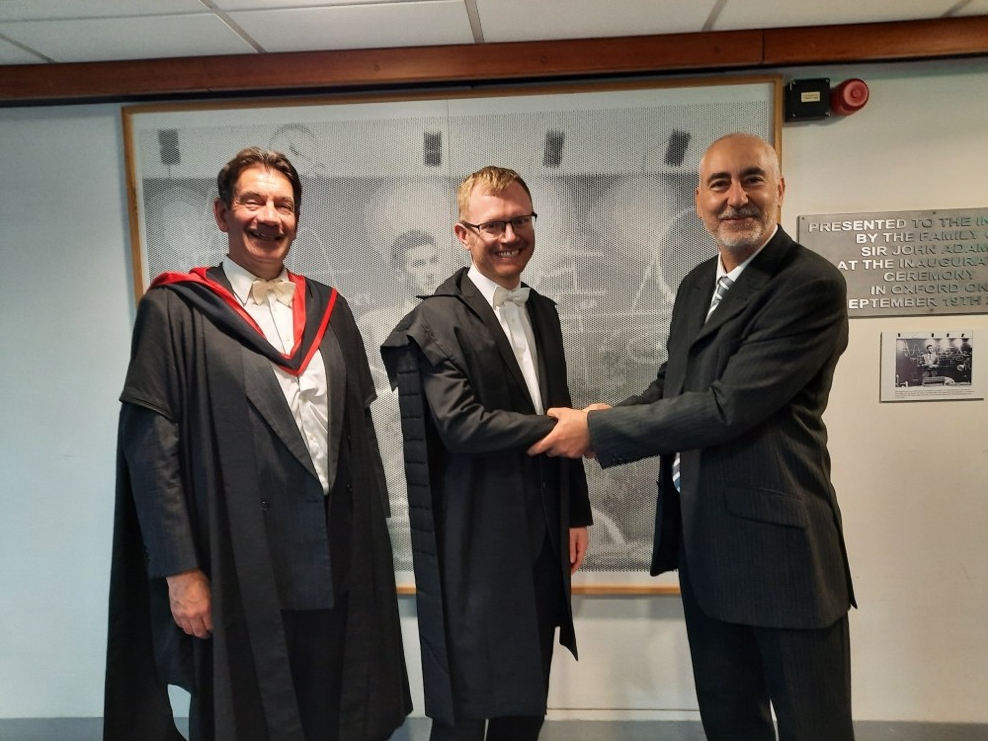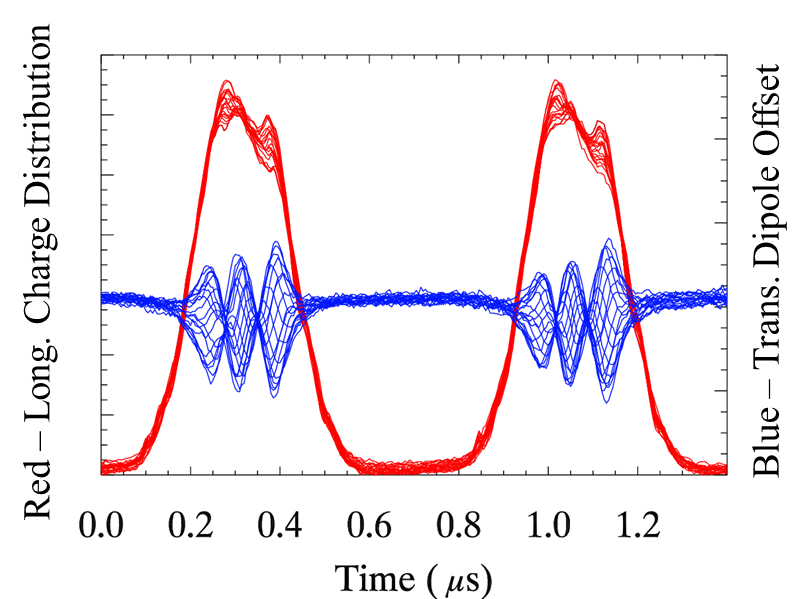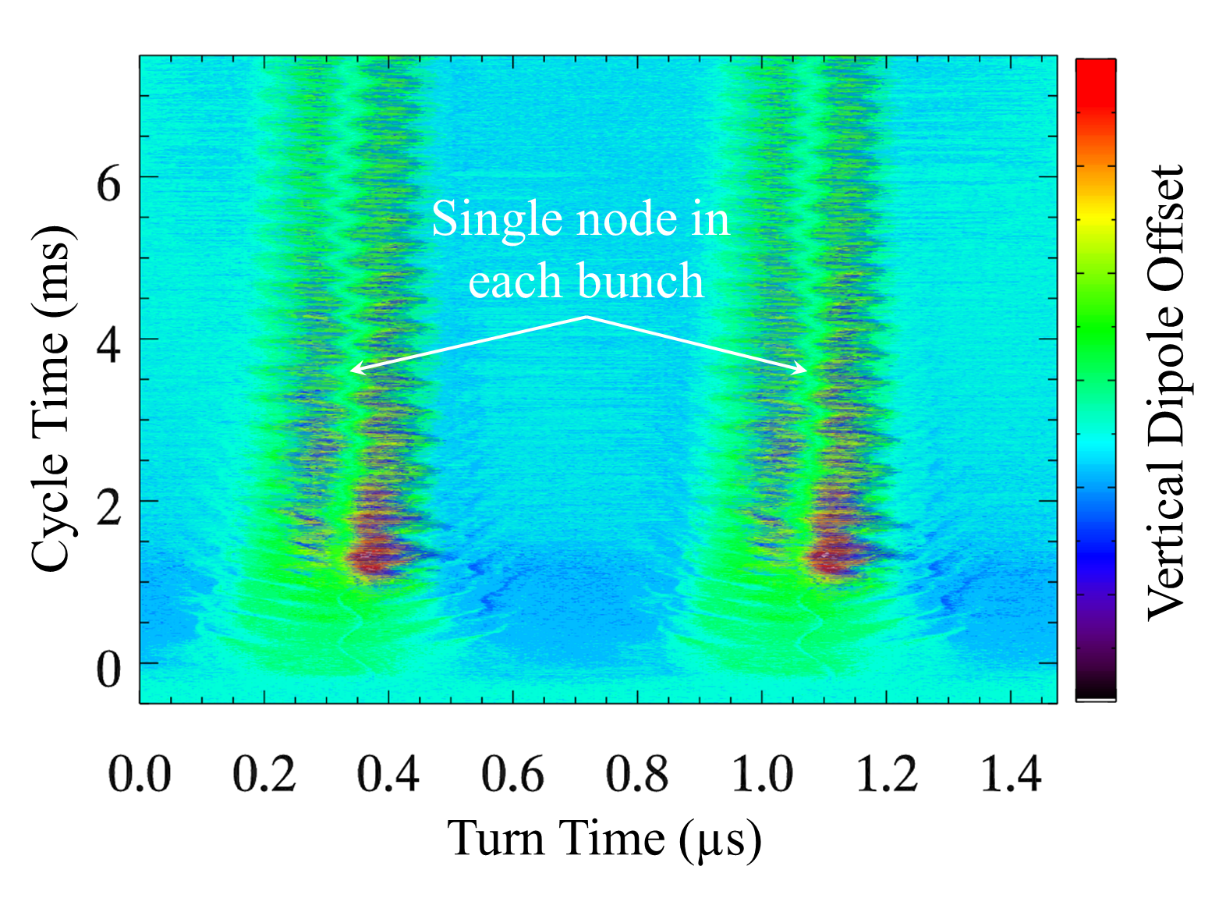
Rob Williamson (centre) with Prof. Phil Burrows (left), internal examiner and Dr. Elias Métral (right) from CERN, external examiner.
Rob joined the ISIS Neutron and Muon Source as a graduate trainee in 2006, following an undergraduate MPhys degree at Trinity College, Oxford. He began research for a part-time DPhil in October 2014 whilst working full-time in a dual role: helping set up and operate the ISIS accelerators, alongside researching developments to improve operations and push the intensity frontier for new facilities such as ISIS-II. On what drew Rob to undertaking a part-time PhD he said, “I’d always wanted to pursue a PhD but thought that ship had already sailed when I started the graduate training scheme at RAL. However, when my colleague began his, I kept a close eye on what was involved and when the opportunity arose for me to start I jumped at the chance.”
Beam instabilities are a common and significant challenge to the operation of high-intensity hadron accelerators such as ISIS, particularly as they can drive beam-loss. To allow for regular hands-on maintenance of the machine, the beam-loss and related radiation dose levels, are carefully controlled and minimised. A key feature of beam instabilities is that their strength increases with beam intensity, thereby leading to an associated limit in the beam intensity achievable.

Characteristic transverse head-tail mode structure (blue) illustrating the dipole offset along the two bunches over 20 consecutive turns of the synchrotron. Longitudinal charge distribution (red) over the same 20 turns is shown for comparison.
On the ISIS synchrotron, a head-tail type instability was identified soon after commissioning and was mitigated to a reasonable degree. However, as the accelerator was developed, the beam intensity achievable increased to such an extent that the instability became a hard limit due to the associated beam-losses. Rob’s research has measured and characterised the instability as a function of key beam and accelerator parameters in both normal operations and in a new operating mode: bunched beams stored at injection energy. Comparison of this extensive campaign of measurements with instability simulations and theoretical predictions provides essential tests of state-of-the-art models.

Turn-by-turn vertical dipole offset, as measured by the BPM difference, along two bunches stored in the ISIS synchrotron at injection energy. The head-tail mode structure grows quickly at ~1 ms with (in this case) a single, undisturbed node in the centre of each bunch, sustained for the rest of the measurement.
The thesis highlighted limitations in present theories and models, the development of which are important for the better performance of both current and future high-intensity hadron machines, not least ISIS and ISIS-II. Two elements of the thesis studies are of particular interest: further methods of mitigating the observed instability and the impact of another complicating factor to the instability dynamics, the electromagnetic field of the beam itself (space charge). The influence of space charge on beam instabilities is currently an essential area of active research in the accelerator physics community, particularly for facilities looking to push to higher beam intensities.
Regarding the challenges along the way Rob explains, “there are always obstacles in your path when attempting such in-depth study, as is required for a PhD. When you then add doing it over the course of many years, whilst also carrying on your day job and the usual challenges of small children (and unusual ones of a global pandemic), it could easily become overwhelming. But, having the unwavering support of colleagues, friends and family, and being able to split the research into manageable chunks and having a defined goal made it more realistically achievable.”
The next steps following the thesis include pursuing studies into identifying what components are driving the instability in the ISIS synchrotron, which is the focus of another DPhil being undertaken by another ISIS employee, David Posthuma de Boer. This naturally leads to possible cures, or at the very least focused mitigation for this particular instability. A prototype instability damping system has also been developed which successfully minimises unstable motion and associated beam-losses. Further work is planned to make this system dependable for consistent use throughout the user cycles. Rob comments, “although the thesis was a goal unto itself, and I’m proud and relieved it is complete, I’m also eager to see the overall research aims through and reap any and all benefits for the operation of ISIS and future accelerator designs.”
Alongside these operational studies, research is continuing the role that space charge plays in the dynamics of the instability with further experiments and simulations. Ongoing collaborations with colleagues at CERN and GSI are also vitally important to push the high intensity limits of current and future hadron machines.
When asked if he would recommend a part-time PhD (or other further education) whilst at work the reply was, “Yes, with the caveat that support of line management and colleagues is a real help. Part of that is also taking the time to identify a suitable topic that is likely to be a high priority for your group for the foreseeable future and something of sufficient interest to you (as you’ll be working on it for a significant period of time).” If you have any further questions for Rob on his experience completing a PhD part-time please email him.
